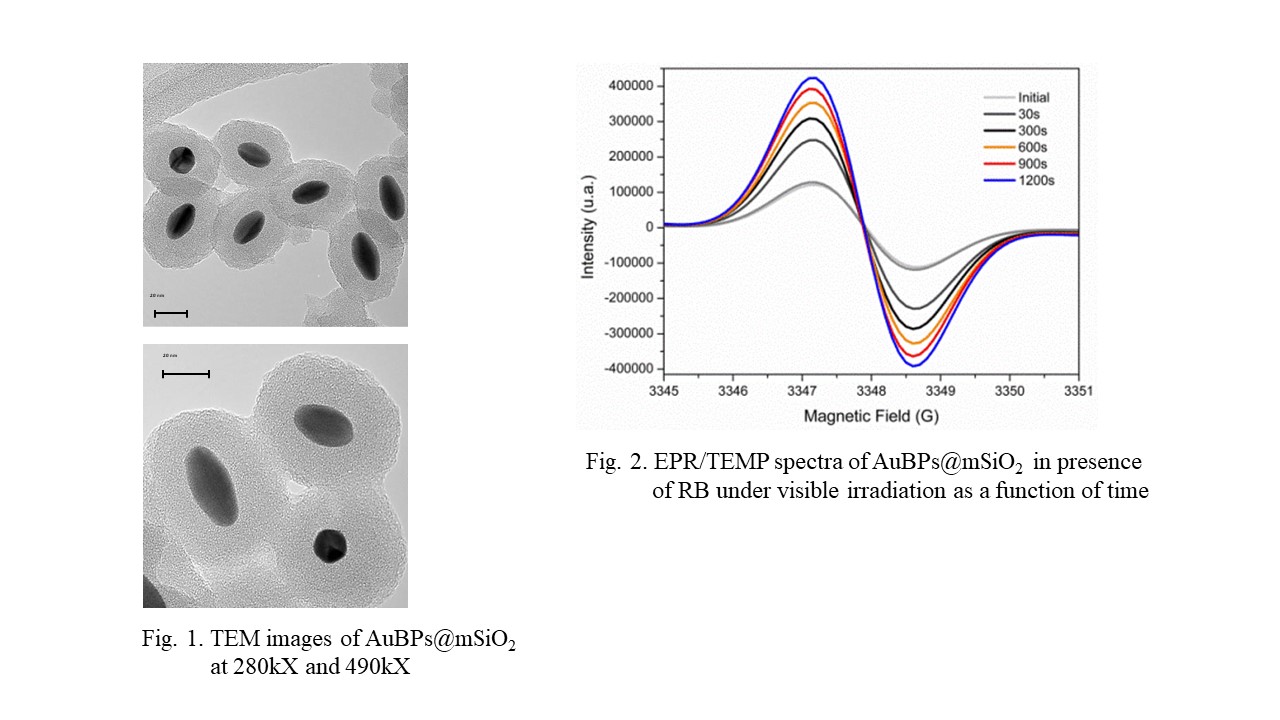(668d) An Enhanced Generation of Singlet Oxygen through the Use of Au Bipyramids/SiO2 core-Shell Nanoparticles for Photocatalysis
AIChE Annual Meeting
2023
2023 AIChE Annual Meeting
Catalysis and Reaction Engineering Division
Electrocatalysis & Photocatalysis V: Photoelectrocatalysis and Photocatalysis
Wednesday, November 8, 2023 - 9:00am to 9:20am
Gold nanomaterials display interesting nanoplasmonic features with potential application in various fields depending on the size and shape of the metal nanoparticle (NP). Au bipyramids (AuBPs) exhibit intense and well-defined plasmon resonance, easily tunable with the aspect ratio and synergy between Au NPs and chromophores can enhance the photophysical properties of nearby molecules. In Rose Bengal (RB)-NPs systems for the production of singlet oxygen (1O2), it is now well established that the control of the dye-to-NP distance ranging from 10 to 20 nm is crucial to achieve the proper coupling between plasmon resonance and the dye[1]. We have developed AuBPs@mesoporous SiO2 core-shell nanostructures to control the distance between metallic surface and photosensitizers in order to increase the production of 1O2 through metal-enhanced fluorescence (MEF). An enhancement of 1O2 generation has been shown with the obtained anisotropic AuBPs and AuBPs@mSiO2 in presence of RB using different methods of 1O2 quantification. They are of interest to the application in photooxygenation reactions e.g. α-terpinene to ascaridole, an anthelmintic drug.
Reference
1. H.H. Lin, I.C. Chen, J. Phys. Chem. C. 119 (2015) 26663–26671.
